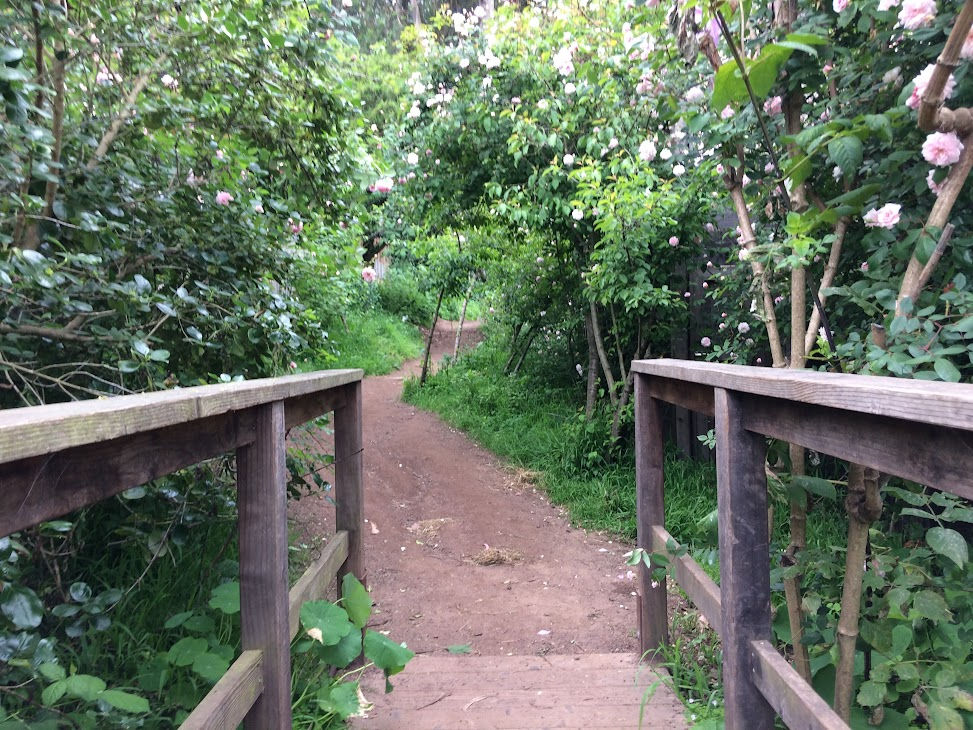Hiking The Rugged Environs of San Francisco
- ckesta
- Aug 15, 2024
- 4 min read
Updated: Nov 28, 2024
At 49 square miles, and population density of 18,832 persons per square mile, San Francisco is one of the most densely populated cities in the United States. So crowded in fact, that a friend of mine who grew up here said parking is so bad that if you want to do something in the city, you don't go to that destination to look for a parking space. Instead, you find a parking space first and then figure out what you can do around that spot. Surprisingly however, almost 18% of the city is open space and accessible by public transportation.
San Francisco, and the greater San Francisco Bay Area, has been at the forefront of environmental awareness and justice. From the founding of the Sierra Club in 1892 to the hippies of the 1960s, this city has a history of communing with nature. Yet despite our crowded environs, even to the surprise of many San Franciscans, nature is quite easy to find. And because this is San Francisco, these gems are easily accessible by public transportation.
Once a refugee camp for those displaced by the 1906 Earthquake and Fire, Glen Canyon Park has had many incarnations until it was officially designated as a city park in 1992. The park is a ten-minute walk from the little enclave of Glen Park so you can have a nice walk, get a nice nosh, and take the BART (our regional subway system) there and back.
Glen Canyon Park
At almost the geographic center of the city is the Mount Sutro Open Space Reserve. This once barren wind-swept hill was the property of Adolph Sutro, an engineer, realtor, and mayor of San Francisco in the 1890s. In 1886 he began planting native and non-native plants to celebrate San Francisco's first Arbor Day. A century and a half later, Mount Sutro is now a lush rainforest sporting 100 plus-foot Eucalyptus trees and beds of Forget-Me-Nots. It's been so transformed that it even has its own ecosystem. Enter from the Stanyan Street gate, walk five mutes, and you will never know you are in a city.
Mount Sutro
Golden Gate Park is hailed as one of the great urban green spaces of the world, right up there with Central Park in New York City and Hyde Park in London. Designed to cover a series of sand dunes on the very western edge of the city, even Frederick Law Olmsted, the landscape architect who famously designed New York City's Central Park said,
“… neither in beauty of greensward, nor in great umbrageous trees, do the special condition of the topography, soil, and climate of San Francisco allow us to hope that any pleasure ground it can acquire will ever compare, in the most distant degree, with those of New York or London.”
Flowery 19th century language aside, what he was really saying was that you can't build a New York- style Central Park on the sand dunes which covered a third of what San Francisco is today. However by 1870, a few years after the first seed was planted, the city was blessed with a pastoral destination a mile wide and three and a half miles long. Visitors and locals alike are mostly familiar with the world-class museums and popular music and comedy festivals, which draw millions of visitors a year. That is just the tip of the iceberg for the many attractions and activities which await the old, young, and the young-at-heart in Golden Gate Park. I am a good source of information, but a better source is the San Francisco Rec and Park department.
Everyone knows the United States of America was established with the signing of the Declaration of Independence on July 4th, 1776. Fewer people know that San Francisco was founded two months later in what the original Spanish explorers named the Presidio, or settlement in English. When Mexico lost California to the United States in the Mexican-American War of 1848, the U.S. Army took control of the Presidio for the next 150 years.
The original adobe structure was established at what is now the southern anchor of the Golden Gate Bridge, but the Presidio itself covers two and a half square miles in the northwestern corner of the city. Many of the structures date back to the Civil War, so there is a lot of history to discover. Because it was an army base until 1994, when it became part of the National Park Service, the Presidio saw little development. Therefore, much of it is as pristine as it was when the Spanish explorers found it almost 250 years ago.
Another placid respite in the Presidio.
About two thirds of the Presidio are forests and laced throughout the park are miles of meandering trails with little sections carved out where one can rest, or just sit and contemplate life. Despite its pastoral environs, there are three different bus lines running through the Presidio, so you don't need to worry about driving or parking. In fact it's recommended you leave your car and take public transportation.
One of the many spectacular views from the Lands End Trail.
Book-ended by the very wealthy neighborhood called Sea Cliff (where Robin Williams and Sharon Stone once lived) and Sutro Baths, is a little patch of nature called Lands End. Even though it is surrounded by the Lincoln Park Golf Course (one of three eighteen-hole golf courses within the city of San Francisco) and the Place of the Legion of Honor Museum (which turned 100 in 2024), most of the three-mile Lands End Trail hugs the coastline and winds through foliage so dense all you will hear is the ocean and nature.







Comments